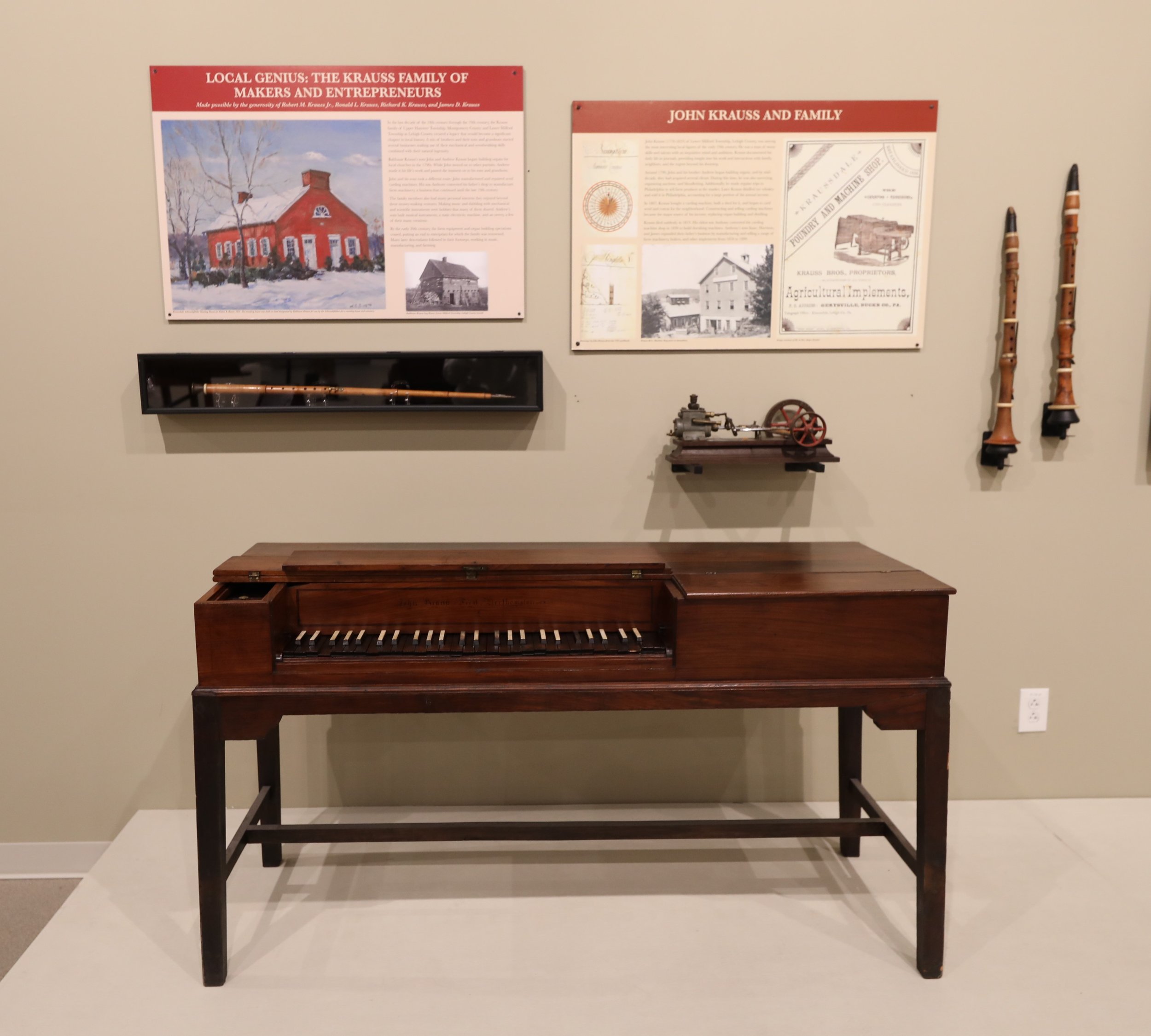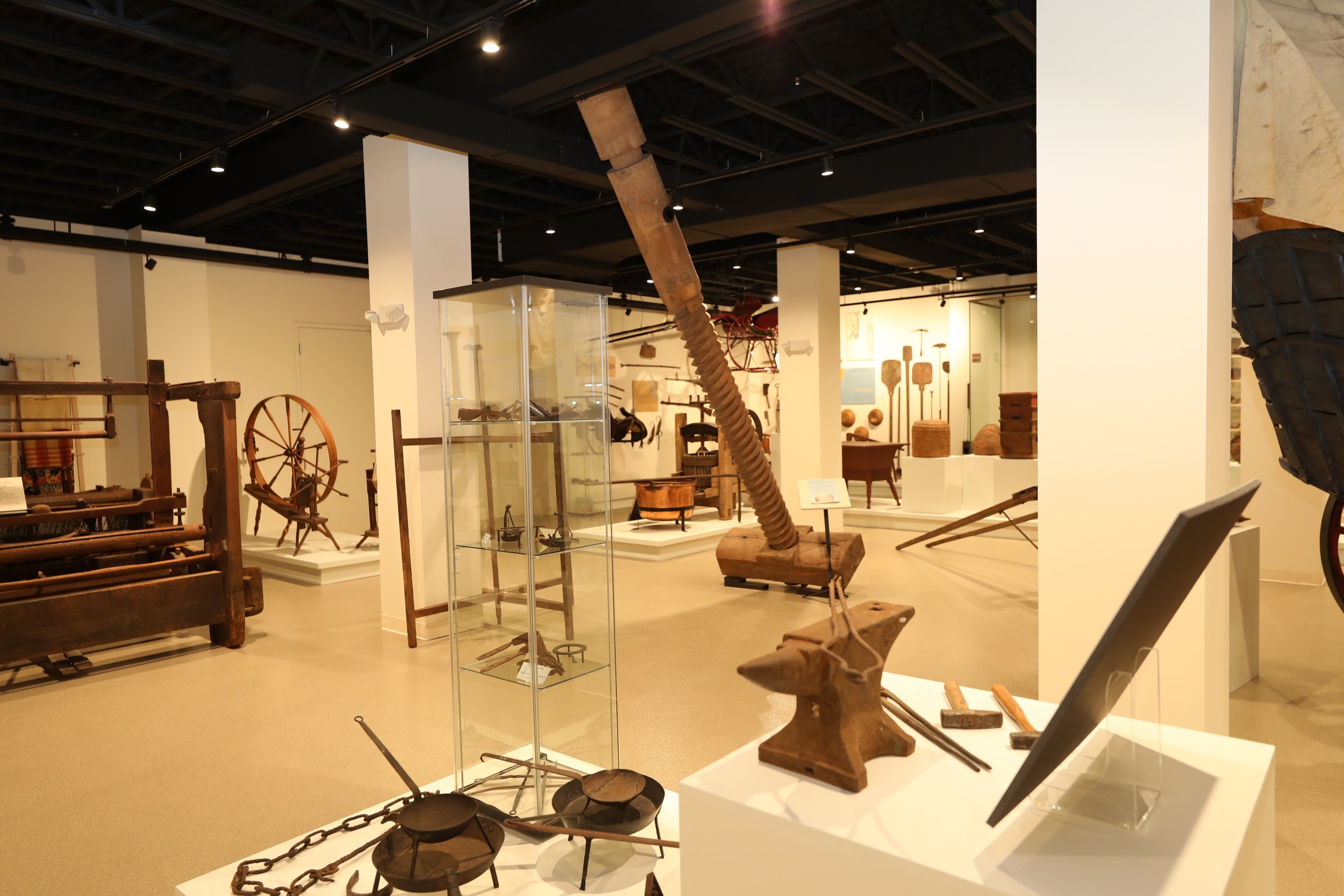
Permanent Exhibits
On the Ground Floor
Stauffer Schwenkfelder Gallery
The Stauffer Schwenkfelder Gallery exhibits tell the story of the Schwenkfelders, beginning with a brief survey of the life of Caspar Schwenckfeld, through the Schwenkfelder journey to Pennsylvania in the 1730s, to settlement and assimilation as new Americans. The gallery features objects interpreting the domestic and spiritual life of the group, including the collection of 14 paint decorated Schwenkfelder chests that were commonly presented to young Schwenkfelder women and men in the 1700s and 1800s.
Schultz Rural Life Gallery
Designed as visual storage, the Schultz Rural Life Gallery is a visually dazzling exhibit of tools and equipment that were used on local farms from the eighteenth to the mid-twentieth century. By exhibiting collections that had long been in storage, the exhibit preserves and shares the rural objects that were part of a way of life now in the distant past. The centerpiece of the gallery is a 16½ foot, 1825 Conestoga wagon, the vehicle that ruled the roads of Pennsylvania from approximately 1750 to 1850. To read more about Conestoga Wagons, click here.
On the Lower Level
Walter Emerson Baum Gallery
The SLHC collection of paintings by Walter E. Baum, Schwenkfelder descendant and Pennsylvania impressionist, is exhibited on the lower level. Because of Baum’s connection to Schwenkfelders, many paintings were acquired during his lifetime as well as after, including a self-portrait and wonderful images of significant Schwenkfelder sites in southeastern Pennsylvania.
On the First Floor
Kriebel Rural Entrepreneurship Gallery
The Kriebel Rural Entrepreneurship Gallery is designed around a collection of farm machinery from the late 19th century manufacturers Heebner & Sons of Lansdale and Krauss Brothers of Kraussdale, given to SLHC by the late Sam Kriebel, whose family also sponsored the gallery. Rather than showing the farm machinery in an agricultural context, it is part of a larger group of exhibits that interpret the spirit of invention, innovation, and entrepreneurship in rural southeastern Pennsylvania from the colonial period to the early 1900s. The iron industry, mills, potteries, commercial butchers and dairies, and the ice industry thrived in this region when farmers and others saw the potential prospects of utilizing local natural resources. Also featured in this gallery is an exhibit about the Krauss family, who for several generations created their own opportunities as organ builders, clockmakers, and farm machinery manufacturers using their natural abilities and the timber, water, and other resources in their own backyards.
The Seipt Family Barn
The largest agricultural artifact at the Heritage Center is an 1826 barn. Moved here from a 35-acre farm on Sumneytown Pike in Montgomery County, this Pennsylvania German barn was probably built around 1826 by Mennonites Jacob and Elizabeth Kulp. In 1926, Schwenkfelder Samuel A. Seipt bought the farm for his son Wilbur and his wife Mabel. The Seipt family owned the barn until donating to the Heritage Center. The barn is open for tours with a guide during open hours.
To learn more about the barn’s move from Towamencin to Pennsburg, watch these videos.
Library Hallway Exhibit Space
Visit the baseball exhibit to discover the 20th century history of our local teams, with jerseys and equipment and even a 1920s trophy won by the East Greenville Tigers! Or explore the exhibit virtually by cllcking on the title above.





